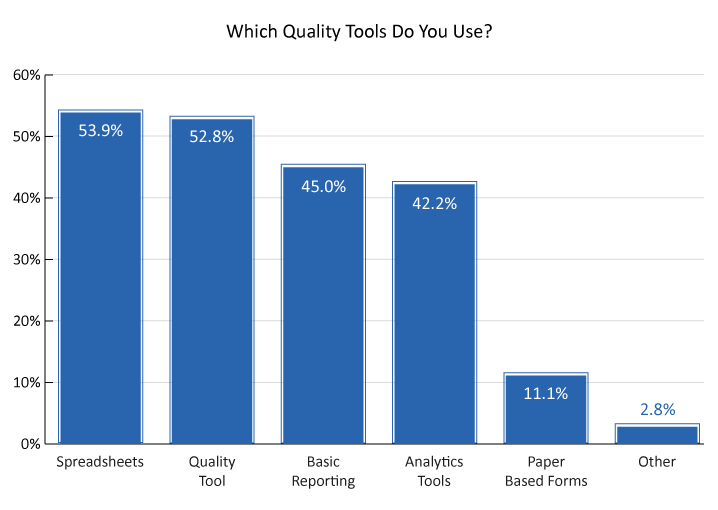Manual, time consuming, and limited are all words used to describe traditional contact centre quality monitoring processes.
But this is quickly becoming a thing of the past! Thanks to the ever-evolving capabilities of automated quality management (AQM) removing cumbersome manual work, whilst boosting compliance and efficiency along the way.
Want to learn more? We asked our panel of experts where automation is making a world of difference to quality monitoring teams.
8 Ways Automation Is Driving Efficiencies and Improving Call Quality
1. Preventing Burnout With Timely Support When Performance Dips

Macmillen
End-to-end automation delivers comprehensive micro-level enhancements that not only directly improve the quality of interactions via simplified workflows, process efficiencies and next-step suggestions, but also reframe the goals of quality management (QM).
It is the fusion of automation with human experience and insight that elevates quality from good to exceptional: appropriate intervention during agent interactions, improvements to onboarding and training based on comprehensive quality insights and timely support when performance dips to prevent burnout.
Contributed by: Finlay Macmillen, Junior Sales Executive, Odigo
2. Monitoring for Potential Upsell and Cross-Sell Opportunities

Maschio
AI monitors for sentiment in real time, alerting agents when an interaction is not going well and providing behavioural guidance or next-best actions that can be taken to resolve an interaction with the most optimal solution.
AI also objectively scores 100% of interactions for soft skills such as being empathetic, owning the problem, active listening, etc. and uses that to pinpoint coaching opportunities or best practices that impact CSAT.
Additionally, AI monitors interactions for potential upsell and cross-sell opportunities as well as to make sure that compliance regulations are being met.
Contributed by: Lauren Maschio, Team Lead, Product Marketing, NICE
3. Flagging High-Risk Conversations With Vulnerability Auto-Scorecards

Mounce
Now it’s possible to automate scoring – not just at a top level, but also based on what a conversation contained.
So, if the conversation related to customer vulnerability, it’s possible to deploy a specific vulnerability auto-scorecard to measure agent performance.
Essentially, you can easily find high-risk conversations because they’re already flagged, meaning your evaluation team can focus on doing a deep-dive analysis and provide meaningful feedback to the agent.
Ultimately, it’s about making the work your evaluators do much more valuable. Your QA becomes laser-focused on interactions you can really learn from, mitigating the risk of your programme becoming a tick-box exercise.
Contributed by: Chris Mounce, Quality and Coaching Specialist, evaluagent
4. Providing Consistent Feedback on All Interactions – Not Just Random Samples

Sherlock
Typical QA analysts are often only able to listen to 3 to 5 random calls per agent, per month, which can be less than 1% of overall customer interactions.
This means a whole host of intelligence and insights are lost, such as where agents may need more coaching, situations that could benefit from real-time guidance, recurring customer issues or trends, and more.
The good news is that many aspects of quality monitoring can be automated with the help of technology like AI-powered conversation intelligence.
Automated scorecards, for example, align with key performance indicators to provide agents with consistent feedback on all interactions, not just random samples.
They also allow supervisors and quality managers to evaluate agents more effectively, freeing up time to focus on targeted training and coaching to drive better customer and employee experience.
Contributed by: Frank Sherlock, VP of International, CallMiner
5. Offering Agents Instant Feedback and Personalized Coaching

Polyakova
Automated performance feedback systems offer agents instant feedback and personalized coaching using their interaction data.
Through AI-driven insights and analytics, supervisors can pinpoint improvement areas, track agent progress, and provide targeted coaching to elevate performance and enhance the customer experience.
Using Generative AI further enhances this process by providing contextually accurate feedback. Advanced systems may also feature AI coaching, automatically suggesting training and improvement plans based on conversation context, further optimizing agent development and performance.
Contributed by: Tatiana Polyakova, COO, MiaRec
6. Automatically Scoring Each Interaction to Remove Potential Bias

Geverts
With manual evaluation a huge time drain and heavily labour intensive, most contact centres evaluate only 1–2% of the calls they receive.
But automated quality management (AQM) takes the time, and potential biases, out of the quality management process.
AQM software uses advanced speech analytics to sift through all agent interactions and automatically score each interaction based on a user-defined scorecard.
Reports show results by individual and by team, and QM professionals can easily track performance over time.
Additionally, AQM software can automatically categorize interactions, regardless of channel, and run predictive scoring on 100% of customer interactions – a major improvement from 1–2%.
Contributed by: Magnus Geverts, VP Product Marketing, Calabrio
7. Automating Compliance Checks to Mitigate Risks
Automation can facilitate compliance monitoring and reporting by implementing compliance management software and automated compliance checks.
These tools can ensure adherence to regulatory requirements, track compliance metrics, and generate audit-ready reports, minimizing manual effort and mitigating compliance risks.
Contributed by: Tatiana Polyakova, COO, MiaRec
8. Empowering Agents to Take Ownership of Their Progress
Platform and software integrations offer valuable opportunities to streamline workflows by retrieving relevant details and automating data input, minimizing manual errors.
Automation enhances workflow accuracy and enables agents to make high-value improvements to the quality of their interactions.
This not only contributes to overall service improvements but also enables agents to focus their processing power on engagement and problem-solving.
Real-time performance tracking empowers agents to monitor their progress, fostering a sense of accountability and ownership.
As a result, automation enhances workflow accuracy and enables agents to make high-value improvements to the quality of their interactions, ultimately leading to enhanced customer satisfaction.
Contributed by: Finlay Macmillen, Junior Sales Executive, Odigo
Some Aspects of Quality Still Require a Human Touch

Booth
Manual quality processes can be time-consuming and resource-intensive, but automating certain elements can significantly improve efficiency.
Quality monitoring is one area where automation can be particularly beneficial – AI-powered tools can automatically score interactions and highlight potential issues for review.
This allows your QA team to concentrate on higher-value tasks such as coaching and process improvement.
Another opportunity lies in analysing customer feedback. Natural language processing can automatically categorize and identify trends. This provides a real-time view of what’s working well and what requires attention, without the need for manual intervention.
However, it’s important to recognize that automation is not a complete solution – some aspects of quality still require a human touch.
By finding the right balance between automation and human oversight, you can optimize your processes, reduce costs, and ultimately deliver better quality for your customers.
Contributed by: Ben Booth, CEO, MaxContact
Where Are Contact Centres on Their Automation Journey?
If we take a look at the information from our survey, we can see that 53.9% of contact centres are still using spreadsheets, and 11.1% are still using paper-based forms – highlighting that there’s a lot of untapped potential for leaders to embrace the very real benefits of automation in their contact centres.

For more great insights and advice from our panel of experts, read these articles next:
- F*** This! How to Make Sure Your Chatbots Don’t Swear at Customers
- Want to Deliver the Best Mobile CX? Try These 10 Tips
- Game On! 12 Use Cases for Gamification
Author: Robyn Coppell
Reviewed by: Xander Freeman
Published On: 13th May 2024 - Last modified: 14th May 2024
Read more about - Technology, Automation, Ben Booth, Calabrio, CallMiner, Chris Mounce, EvaluAgent, Finlay Macmillen, Frank Sherlock, Lauren Maschio, Magnus Geverts, MaxContact, MiaRec, Monitoring, NICE, Odigo, Quality, Tatiana Polyakova, Top Story









































